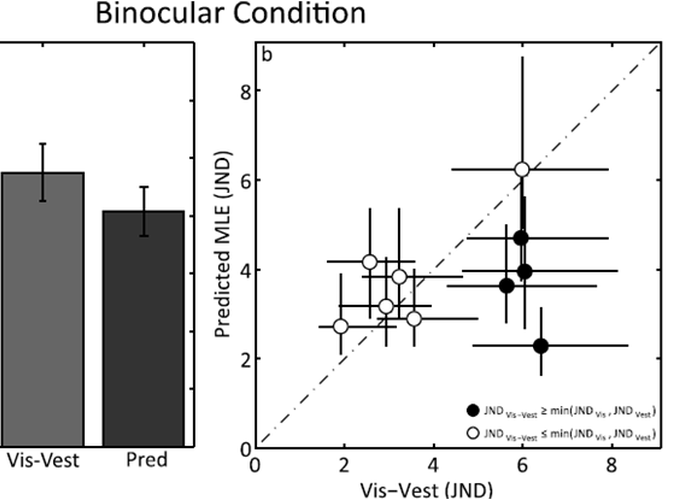Abstract
Self-motion through an environment stimulates several sensory systems, including the visual system and the vestibular system. Recent work in heading estimation has demonstrated that visual and vestibular cues are typically integrated in a statistically optimal manner, consistent with Maximum Likelihood Estimation predictions. However, there has been some indication that cue integration may be affected by characteristics of the visual stimulus. Therefore, the current experiment evaluated whether presenting optic flow stimuli stereoscopically, or presenting both eyes with the same image (binocularly) affects combined visual– vestibular heading estimates. Participants performed a two-interval forced-choice task in which they were asked which of two presented movements was more rightward. They were presented with either visual cues alone, vestibular cues alone or both cues combined. Measures of reliability were obtained for both binocular and stereoscopic conditions. Group level analyses demonstrated that when stereoscopic information was available there was clear evidence of optimal integration, yet when only binocular information was available weaker evidence of cue integration was observed. Exploratory individual analyses demonstrated that for the stereoscopic condition 90% of participants exhibited optimal integration, whereas for the binocular condition only 60% of participants exhibited results consistent with optimal integration. Overall, these findings suggest that stereo vision may be important for self-motion perception, particularly under combined visual–vestibular conditions.
